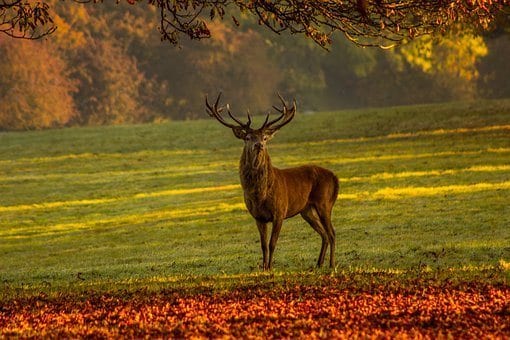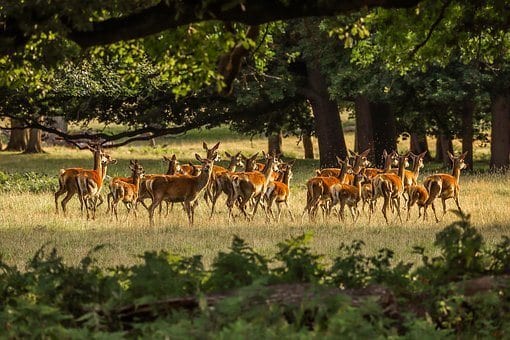New Forest deer watching
The New Forest is a special place and something that cannot be denied is the ethereal charm of the wandering deer. Herds can be seen throughout the forest. We are fortunate to have 5 types of deer resident here. Sika, Fallow, Roe, Muntjac and Red Deer roam uninterrupted throughout the New forest.

History of deer in the New Forest
King William the Conqueror named it as a Royal Forest in 1079. This was primarily “for the pursuit of the beasts of the chase – red, roe and fallow deer, and wild pigs.” It was the King’s personal hunting ground and for anyone else it was considered poaching!
The deer in the New Forest have no natural predators. They have to be culled in order to keep numbers stable. That’s one of the many jobs of the New Forest Keepers. Around 30% must be culled each year to keep the population under control so as not to upset the balance of the forest.
This means that there is a plentiful trade of local venison and many restaurants serve this fine healthy meat in the winter months.
Where to find deer
Deer can be seen in many areas, deer watching in the New Forest is a lovely activity. Deer can be commonly seen in Burley, Brockenhurst, Beaulieu and Bolderwood. At Bolderwood you can also see them at the deer sanctuary. Here the deer are fed daily (12-3pm) during the months of April -September by the local forest rangers who monitor their health. It is common to see 30-40 deer in the herds at anyone time.
Deer are special
Deer watching is an activity that requires a little bit of planning in the New Forest. As deer are notoriously shy animals they tend to keep to the quieter parts of the forest during the day. But at dusk and dawn they can venture near the roadsides. Please do take care when driving, as they can appear by surprise next to the roads . They graze on brambles and on fresh shoots and at Bolderwood are fed a supplement of hay or grain.

Stag or buck, hind or doe?
There are many names given to different ages and genders of deer.
An adult male Red or Sika deer is called a stag, the female is a hind, and a young deer is a calf.
Whereas for Fallow and Muntjac it’s buck, doe and fawn.
And for Roe it’s different again: buck, doe and kid!
Deer rutting
Autumn is the most exciting time of year to watch our deer. That’s when they mate, in order to do so they have to establish their hierarchies.
The three largest species of deer (red, fallow and sika) all rut in the autumn and are easy to watch in in the wild. Rutting activity is most intense soon after dawn, when the male stags challenge each other.
If you do go out to watch them, you must remember that male deer are pumped full of testosterone and highly aggressive. They can attack dogs and people so please do keep your distance and use zoom on your cameras!


 Check Our WiFi
Check Our WiFi